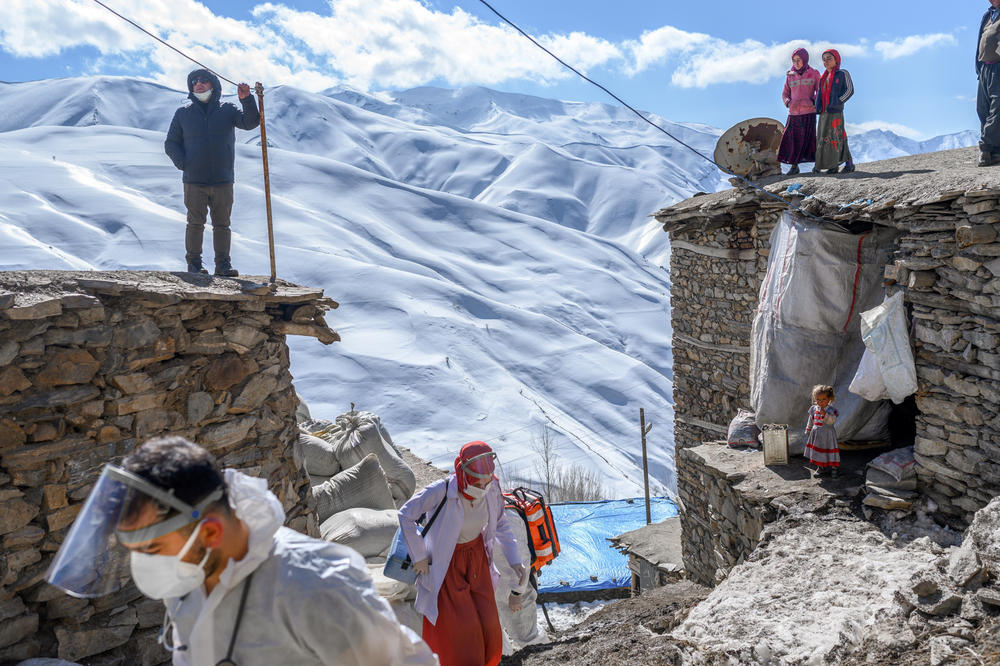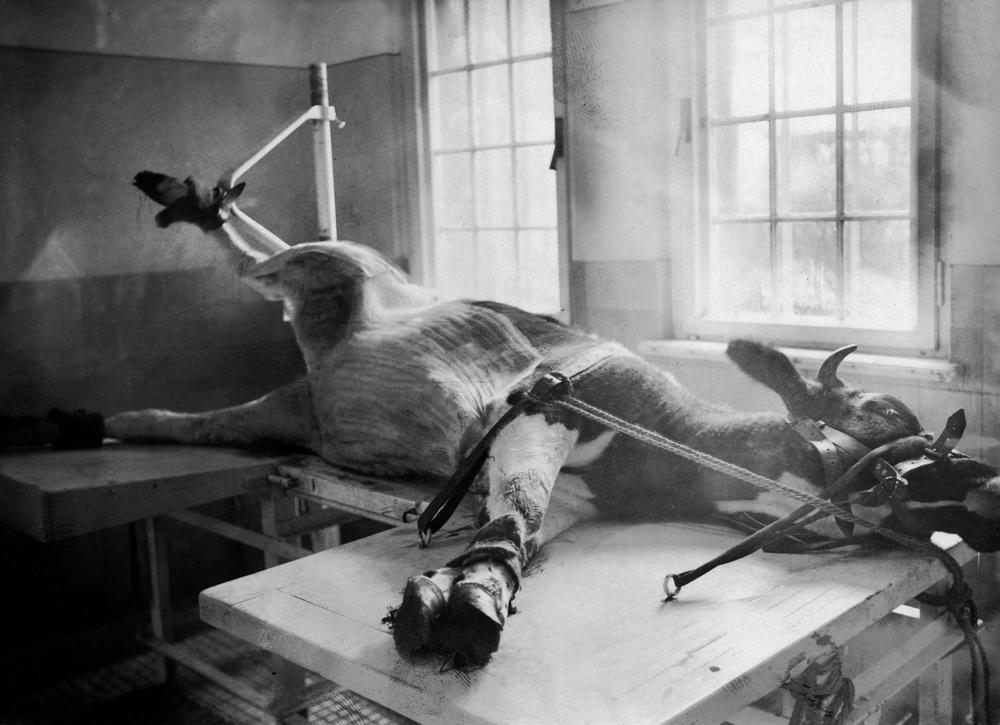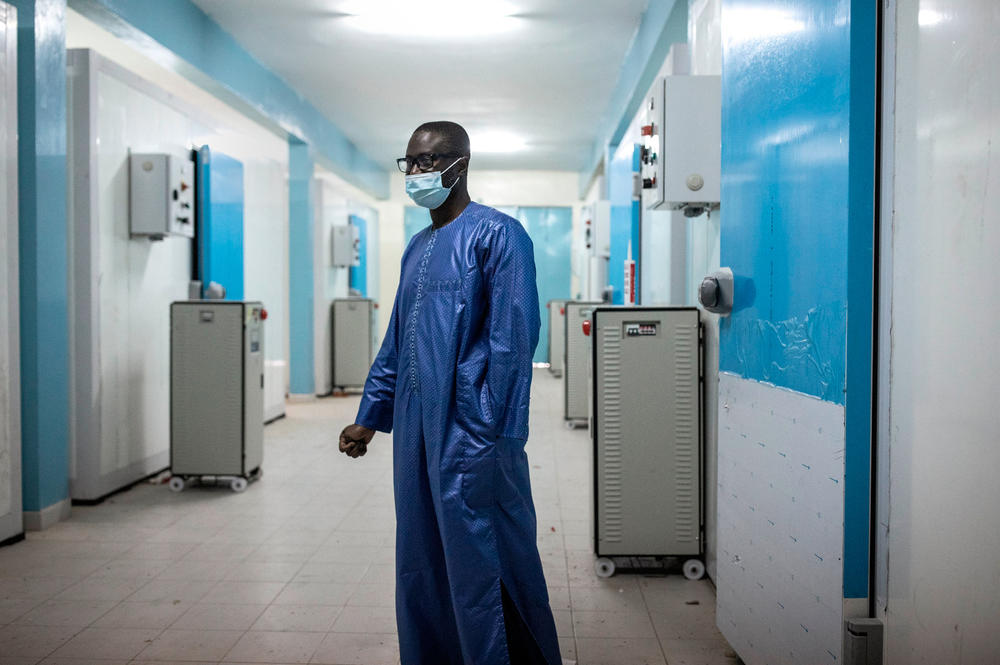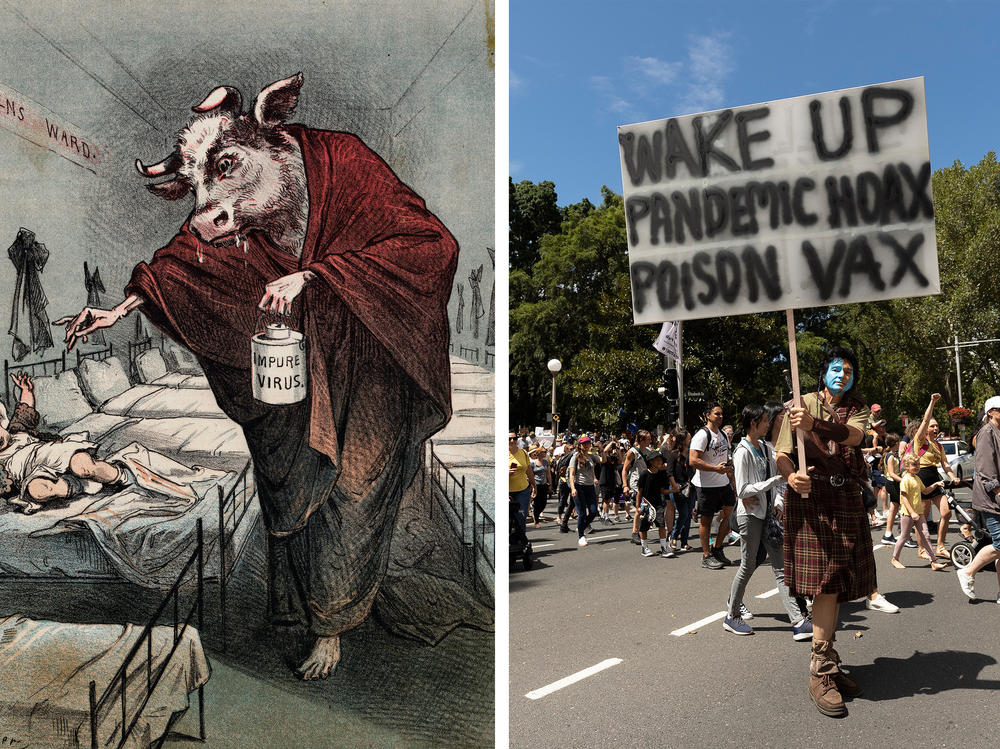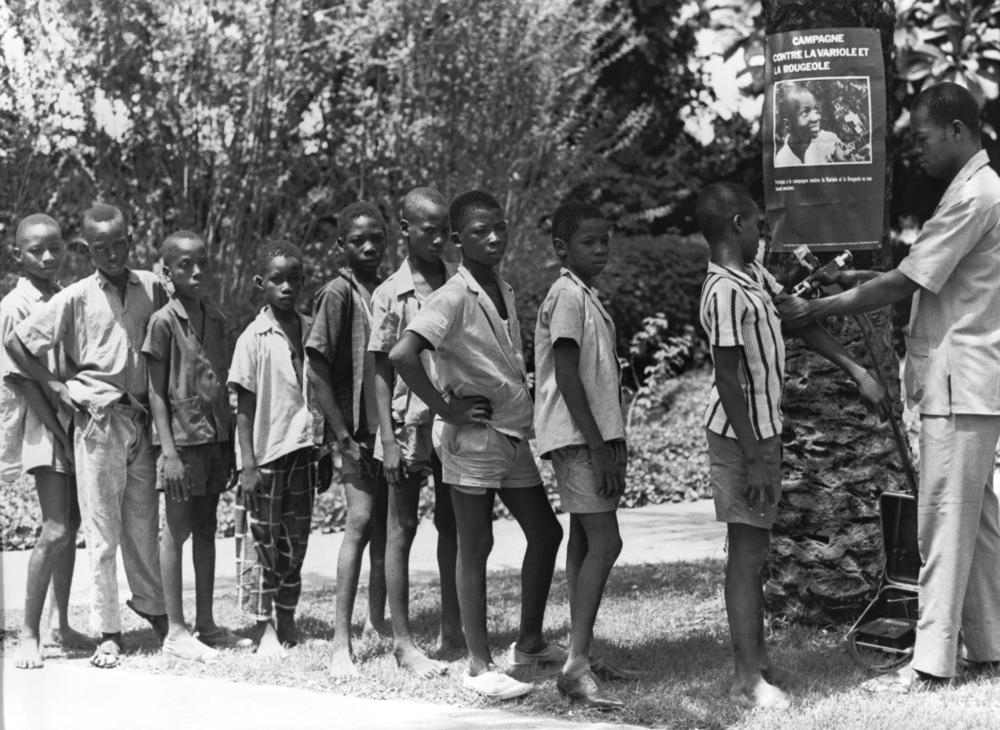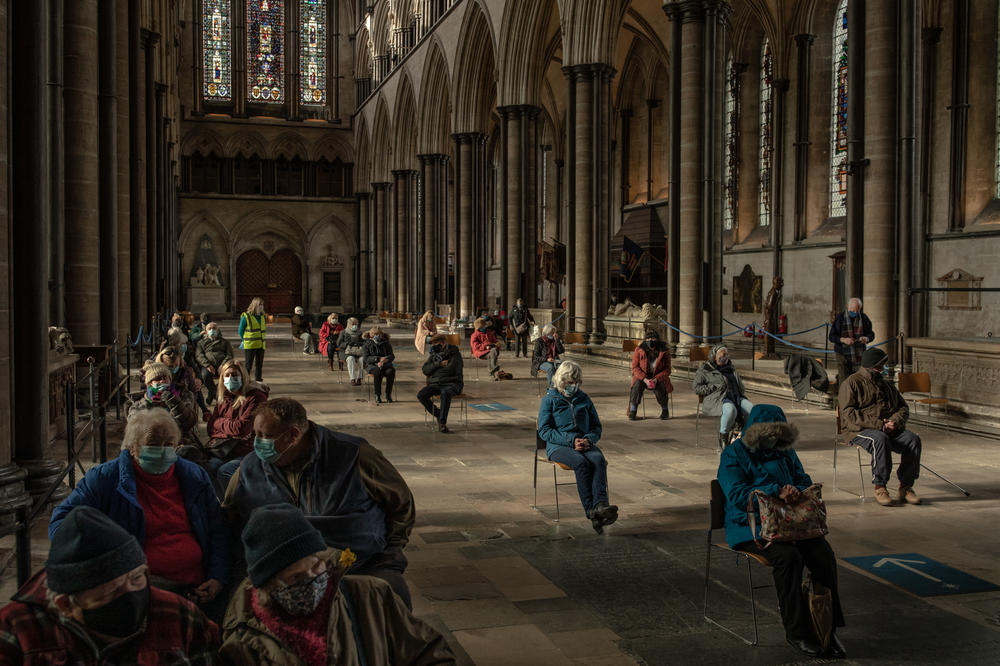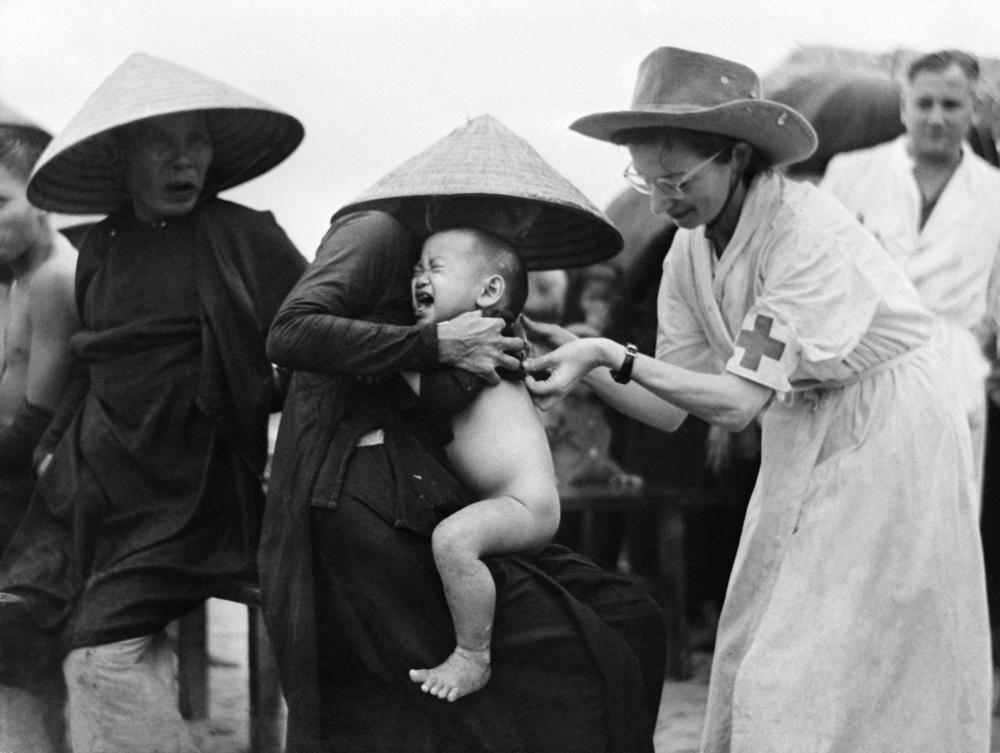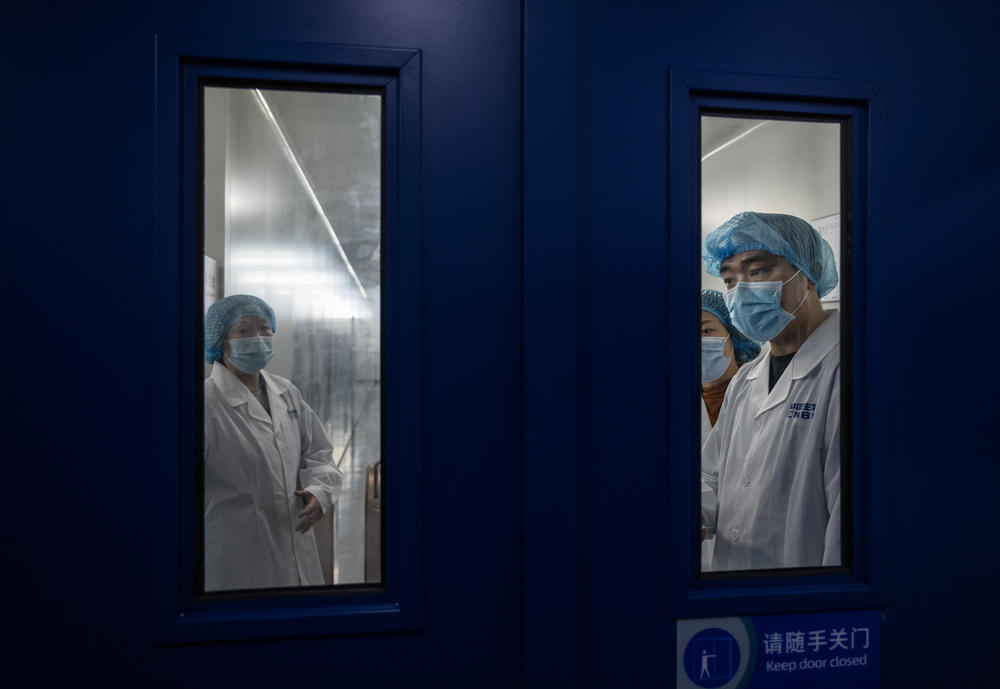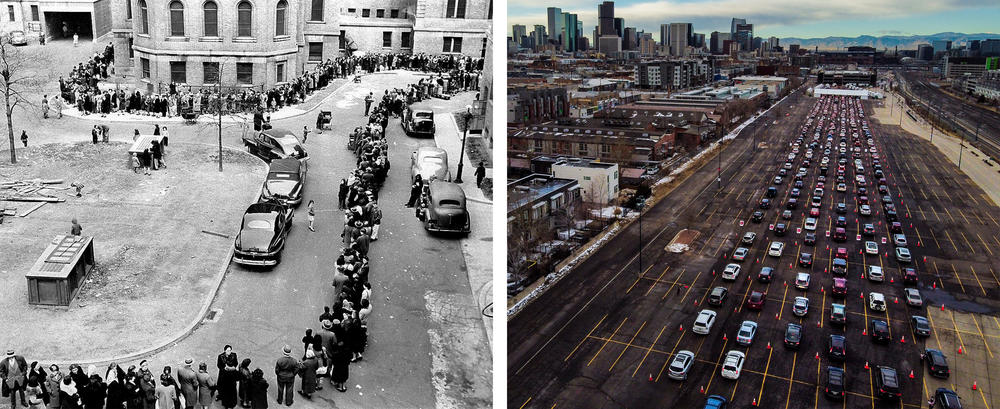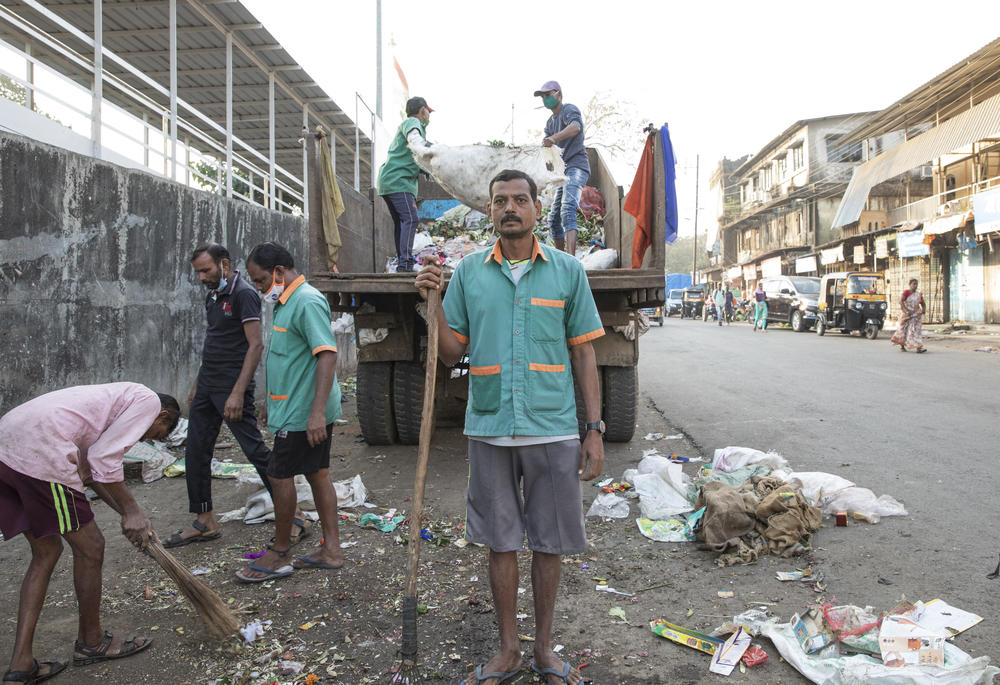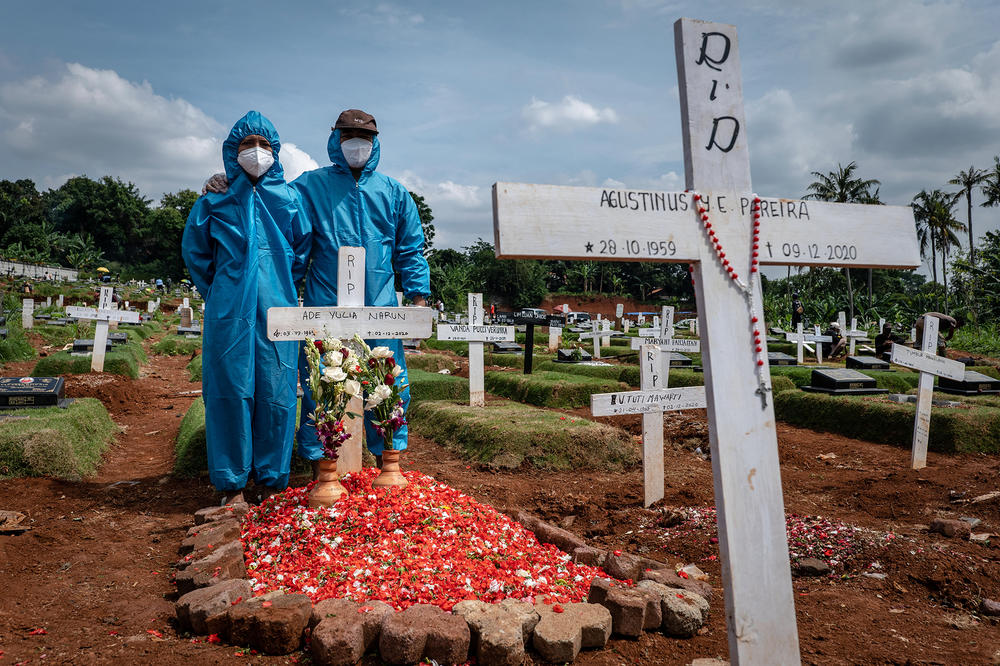Section Branding
Header Content
PHOTOS: Vaccine History Repeats Itself — Sometimes
Primary Content
Vaccines delivered by drones and by burros. People who shout about the danger of vaccines and refuse to get a jab. Public health campaigns to convince the vaccine hesitant. Public criticism of a failure to provide vaccines for lower-income countries and marginalized populations.
These are all part of the unprecedented world vaccination campaign now going on.
They're also the hot-button topics that go back to the very first vaccine — for smallpox in 1796.
In photographs and illustrations from past and present vaccine campaigns, you can see both the similarities and the striking contrasts.
James Colgrove, a professor of sociomedical sciences at Columbia University, and Sanjoy Bhattacharya, a professor of history at the University of York and director of the WHO Collaborating Centre for Global Health Histories, helped us out with historical context to go along with the images.
The vaccine has been created. Now how to get it where it needs to go?
Getting a vaccine from point A to point B has been a logistical problem since the very start with the smallpox vaccines, Bhattacharya says.
Back then, it was a painstaking process. Liquid was usually taken from an open smallpox sore, dried and mixed with water when ready to vaccinate. But transportation delays would sometimes render the vaccine ineffective. (The method had a shelf life of weeks to months — not a long time considering the transport options at the time.)
The solution? Medical teams would take children (in one case, orphans were used to transport the virus from Spain to its colonies) and animals (such as cows and horses) from village to village or from country to country, harvesting liquid from smallpox or cowpox sores and getting it under the skin of an unvaccinated person. But that was clearly not a sustainable practice, Bhattacharya says, for ethical and scientific reasons.
Many years of innovation followed, including the development of freeze-dried vaccines. The COVID-19 vaccine world is dependent on cold chain technology that uses super freezers to keep vaccines at temperatures as low as minus 13 degrees Fahrenheit while they make their way on planes, trains and automobiles.
Relying on cold storage technology is still not a perfect system.
The challenge has always been the greatest in poor and rural areas. "You have to make sure you have generators to maintain refrigerators," Colgrove says. It is the same problem countries are having with the COVID-19 vaccine today.
Vaccine inequity is "just one part of a larger picture of inequity," Colgrove says. "People have been unvaccinated for the same set of reasons that they have always been deprived of other material goods."
For every vaccine, there's been a campaign against it
"Anti-vaccination movements are as old as vaccines themselves," Bhattacharya says.
What drives people to oppose a vaccine? You have to look at what is happening in a country or community culturally and politically and that is where you'll find your answers. It is usually a combination of factors that create doubts about how safe and effective a vaccine is, Bhattacharya says.
But what really gets people riled up, Colgrove says, is when governments mandate vaccinations. "What gets people marching in the stress, forming orgs, creating pamphlets is when governments start to require it. If you don't want the vaccine, but you don't feel like anyone is forcing you to get it, then you just don't get it. Anti-vaccination movements really arose in the mid-19th century when governments started to require it."
There have always been trust issues
A vaccine campaign must address the issues of trust between those giving the vaccines and those receiving it, Bhattacharya says. You can't run it just with logistics. The vaccine campaigns that don't take trust into account end up struggling while the process drags on to get a disease under control.
In the case of polio, Bhattacharya says, it was difficult to convince communities to get the vaccine in places where governments hadn't acted in the communities' interest on other issues.
"It was about [the government] convincing people that the polio vaccination was about their best interests in a context where governments had done little for their general welfare. This was the context in which polio vaccination drives were resisted in northern India, for example," Bhattacharya says. People have said it was superstition about the vaccine that prevented Indians from getting the vaccine, but it was actually about "a fundamental lack of trust."
It's all about the advertising
To get the word out and make a convincing argument about the vaccine, it's all about marketing and messaging. Advertising techniques were first used in the 1920s for diphtheria immunizations, Colgrove says. (Think images of smiling babies with warnings in red ink that diphtheria kills.)
The way a vaccine is given is also critical. The first oral vaccine in the 1960s for polio replaced the hypodermic needle. It certainly made it much easier to sell to those who might be hesitant or fearful of needles, Colgrove says.
"Needle phobia is a big deal, and orally administered vaccines are more acceptable to many people. Also you don't have to worry about the injection equipment [which was helpful for mass vaccinations]," Colgrove says. "In fact one of the reasons the global polio eradication ended up being so successful was they used the oral vaccine as opposed to the injected vaccine." The oral vaccine also did a better job of protecting against the virus.
The West makes the vaccines and the rules. That's actually kind of new
The West wasn't always the main player in vaccine production — although it was always on the path to be. Following World War II, several newly independent (decolonized) countries were keen to develop their own vaccine production capabilities. Two examples are India and Pakistan, Bhattacharya says.
"Countries like India and Pakistan were able to play Cold War foes [the U.S. and Soviet Union] against each other to get access to new vaccine production technologies, assistance in setting up new vaccine production units," he adds.
So how did the West ultimately get control? In that post-World War II era in the West, people started to realize there was money to be made in all pharmaceuticals (not just vaccines), and "the business landscape changed," Colgrove says.
What had been a cottage industry of small pharmaceutical companies, individual investigators and physician scientists started producing more products along with vaccines, Colgrove says. They evolved into the mega companies that exist today.
That said, other countries are still in the vaccination business — albeit with mixed results — including Russia's Sputnik V, China's Sinovac and outlier Cuba.
The power and politics behind vaccines
Politicians love their mottos and the vaccination effort is no different. In the U.S., government officials called it Operation Warp Speed and now the "We Can Do This" campaign. In Germany, it's "Vaccinate, Vaccinate, Vaccinate." In Israel, it's "Getting Back to Life."
So, how much of vaccine production and distribution is about political power and money?
Bhattacharya says pretty much all of it. "Pandemic responses, including the vaccination programs that underpin them, are always political," he says. "Those who claim that they know the means of accentuating 'global solidarity' are no less political; they just have different political goals."
And the money? Most vaccines wouldn't exist if Big Pharma didn't make a profit off them, Colgrove says.
One of the criticisms is that we have vaccines for diseases that burden rich countries but not for those that plague poor countries — such as malaria and dengue fever. "If those diseases were a problem in Europe and the U.S., we would probably have vaccines for them now."
That's the contradiction of the pharma industry, Colgrove says. "On the one hand they produce these drugs for the benefit of everyone, but their mission is to make profits for their shareholders."
What will the world say about the COVID-19 vaccination effort in 100 years?
People will not remember the details, Colgrove says. Take, for example, the polio vaccine rollout, he says. If you ask people today, they would say it was a huge success, but they forget it was total chaos for a while.
"There were a lot of problems with the initial distribution during the period when the demand exceeded the supply. The polio vaccine was developed by a nonprofit foundation. The U.S. government had very little involvement because the Eisenhower administration saw involvement as the opening for socialized medicine.
"There was also lots of confusion and uncertainty about who should get the vaccine first and supplies were limited. There were stories of rich people pulling strings to get their kids vaccinated first."
When it came to the COVID-19 vaccine, the Centers for Disease Control and Prevention knew there were limited supplies so it was able to prioritize certain populations such as health care workers and older people, Colgrove says. "But I think the way people will remember the COVID rollout will depend on what happens in the coming months and years."
No one can deny the incredible feat of making vaccines in a year. But Bhattacharya points to another legacy.
Bhattacharya says it's unfortunate, but this vaccination effort will be all about profits, not humanity — the world was let down when it comes to equity and access to the vaccine.
"I think our descendants will look back with some shame at the efforts of so many private vaccine producers to make immense profit from human misery and anxiety."
Copyright 2021 NPR. To see more, visit https://www.npr.org.

